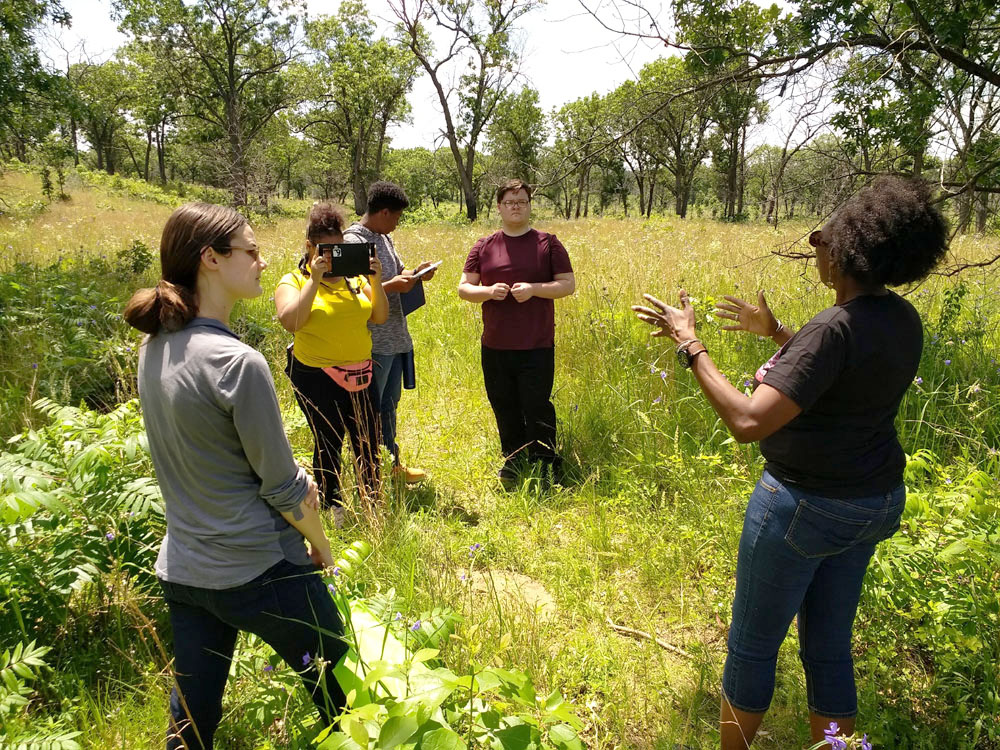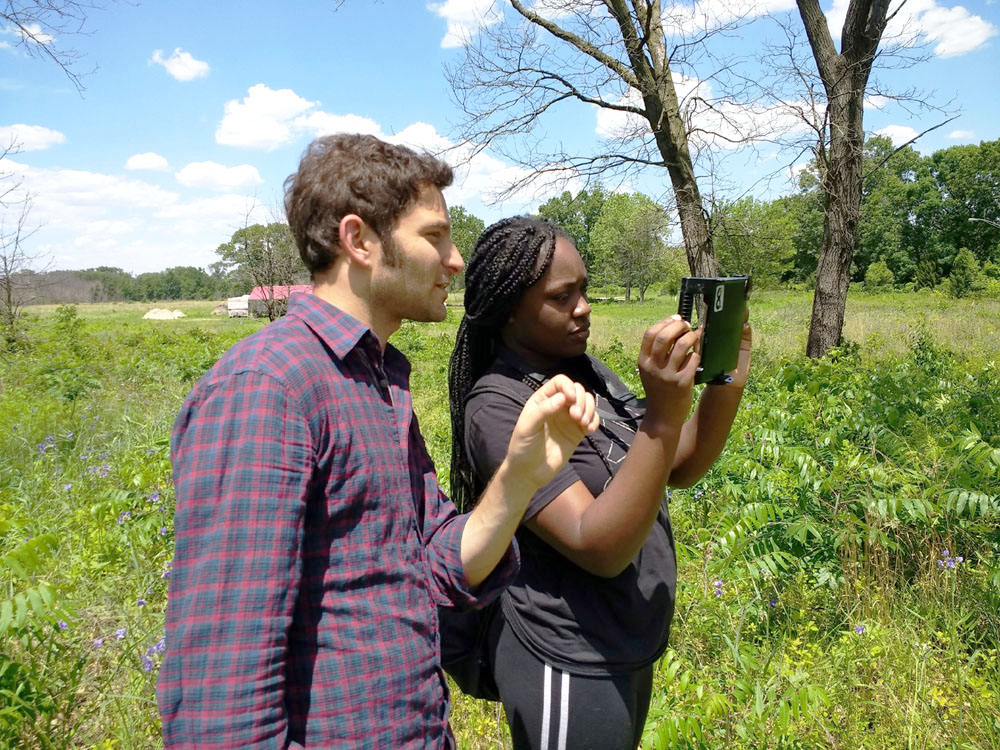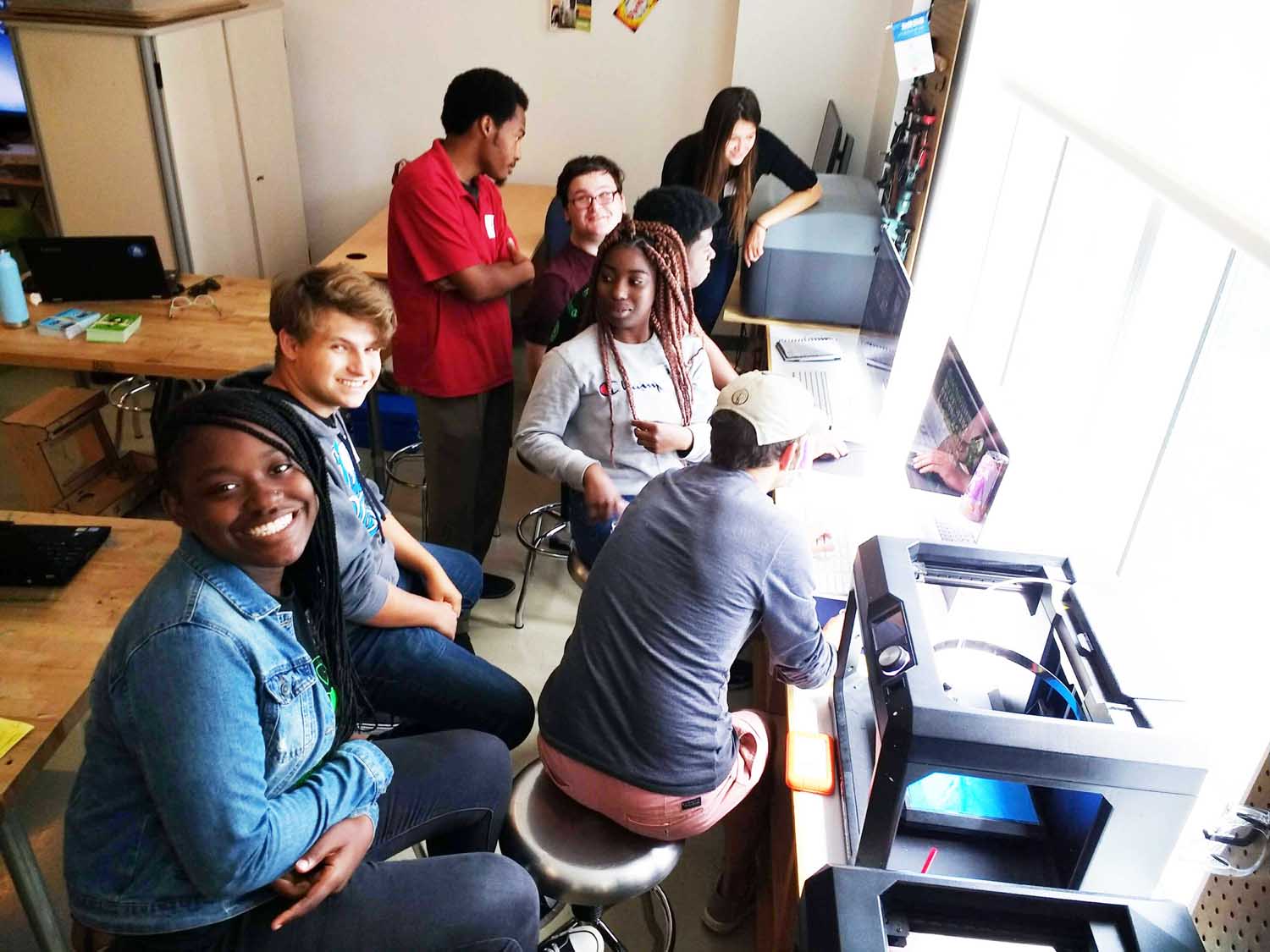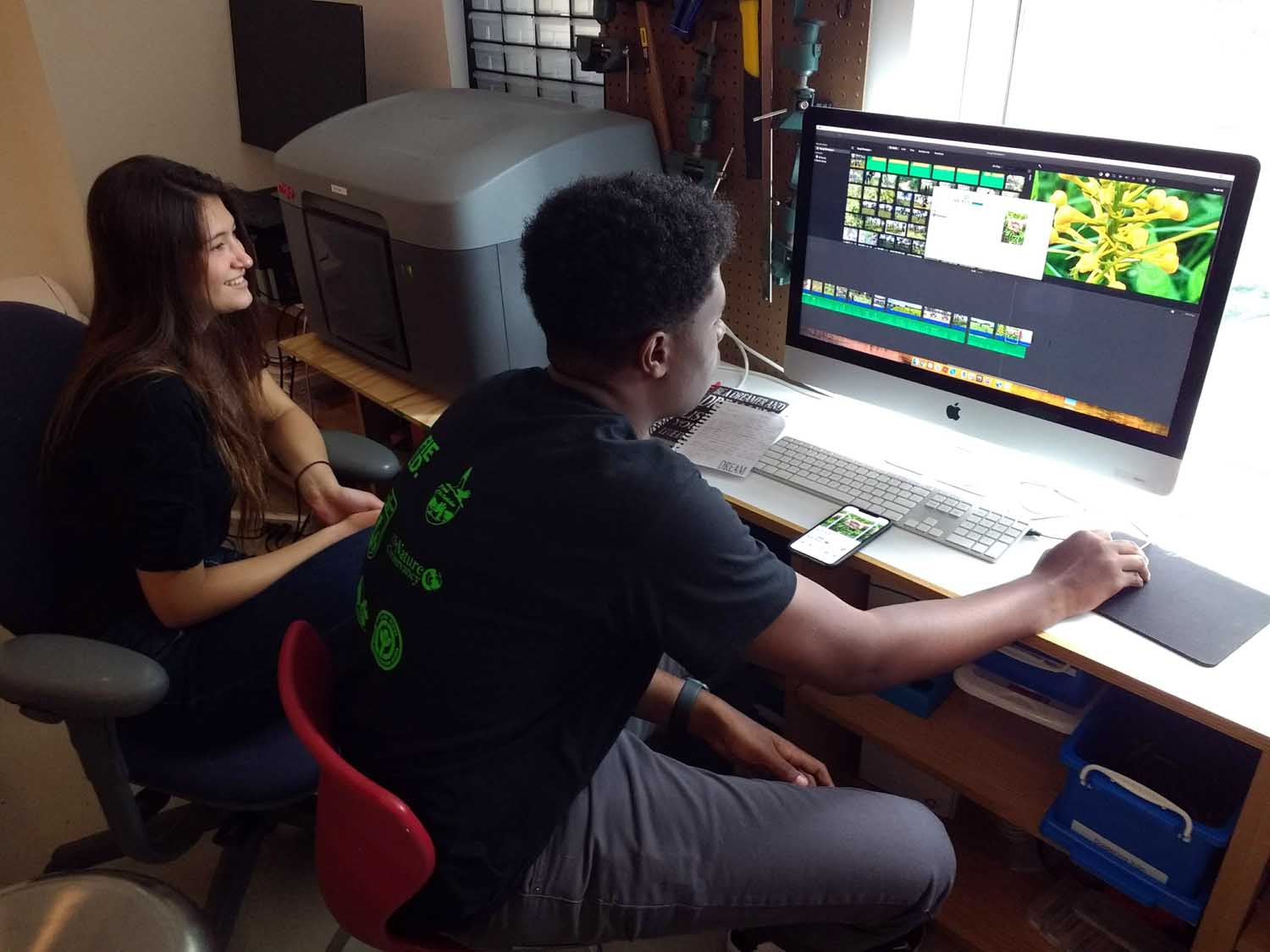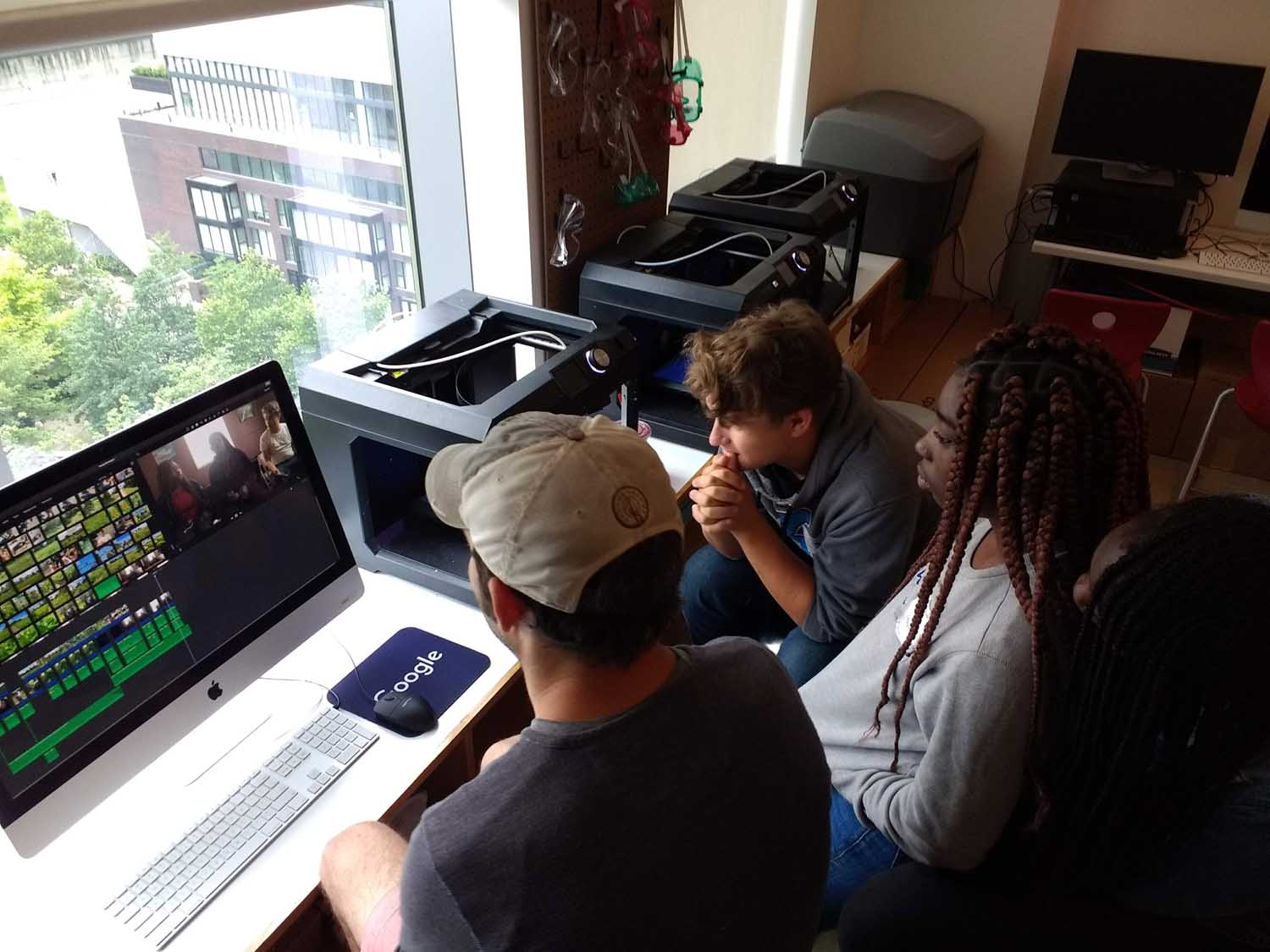From left, Jalen Winston, Brianna Jackson, Erik Hertzberg, Samarria Fitch, Marius Anthony (Crew Leader) and Ralph Gonzalez visited Chicago for their final Young Filmmakers Workshop at GEMS World Academy, near Millennium Park.
By Lisa Biehle Files
Pembroke Township, in the southeast corner of Kankakee County, is full of treasures of both place and people. From its black oak savanna to its black rodeo, topography and culture meet to create a one-of-a kind, rural community.
This summer, six Pembroke-area high school students participating in the U.S. Fish and Wildlife Service’s Youth Conservation Corps (YCC) documented some of what makes Pembroke so unique via three Young Filmmakers Workshops with Matt Wechsler of Hourglass Films.
In June, students learned the fundamentals of filmmaking with iMovie and iPads to document their experiences throughout the summer. In early July, Wechsler monitored student progress. Then students came to Chicago in late July for a final round of editing on iMacs at GEMS World Academy, near Millennium Park.
A Place Rich in Ecology
When the last Ice Age glaciers receded 15,000 years ago, most of the Midwest was flattened, leaving behind rich topsoil, but Pembroke’s landscape is different. Glacial lakes in the area dried up, leaving sand and sediment which blew into tall dunes. A transition ecosystem resulted with trees, prairie grasses, and many rare species of plants and animals.
Pembroke has the world’s largest concentration of high-quality black oaks, according to the Nature Conservancy, which is preserving portions of land.
The area has remained untouched by large-scale commercial farming because soy and corn won’t grow well in the porous, sandy soil that shifts underfoot. Instead, collectives of small, organic farmers, such as Pembroke Farming Family, use crop rotation and sustainable growing methods to sell a variety of produce at area famers’ markets, restaurants, and stores throughout greater Chicago with highlights in “food desert” communities.
From left, Erik Hertzberg points out Baptisia (white False Indigo), Samarria Fitch films a dragonfly, and Brianna Jackson identifies horsemint (wild oregano).
Blueberries happen to thrive in this topography making it the perfect location for Rehoboth’s annual Blueberry Festival, where visitors can pick their own or purchase the nutritious berries.
A People Rich in Spirit
Pembroke is known as one of the most economically depressed communities in Illinois and the nation. According to Census Reporter, the median household income is $26,607, compared to $61,229 in the state of Illinois.
The racial makeup is 78% black, 9% Hispanic, and 9% white, making it one of the largest, rural, black communities north of the Mason-Dixon Line.
According to Dave Baron who wrote the book, Pembroke: A Rural, Black Community on the Illinois Dunes, ”A deep green streak runs through the personality of Pembroke,” because many people have “embraced sustainability and self-sufficiency.”
When working on a quality of life survey with the Field Museum of Natural History, the themes chosen by residents to represent Pembroke were: “God, Family, Nature.” From Catholic to Mennonite, the community is rich in spirit with an abundant variety of churches.
The Latting Rodeo is another example of Pembroke’s distinctive culture. Almost 45 years ago, Thyrl Latting started producing rodeo shows locally as well as across the country. His son, Mike, continues the tradition, drawing thousands of people to Pembroke annually.
The Community Development Corporation (CDC) was created to help preserve the culture and ecology of Pembroke while focusing on community leadership, progressive growth and economic development. The CDC and other citizens of Pembroke recently worked with the Nature Conservancy, U.S. Fish and Wildlife Service, the Illinois Department of Natural Resources, and the Field Museum of Natural History to develop a long-term sustainability plan.
The Youth Conservation Corps is one of these initial solutions. Their summer film projects will offer an inside perspective on Pembroke’s singular alchemy of people and place.
For more information:
”Green Acres”, Chicago Tribune Sunday Magazine, 2007
”To Free Ourselves, We Must Feed Ourselves”, The Sun Magazine, July 2019
